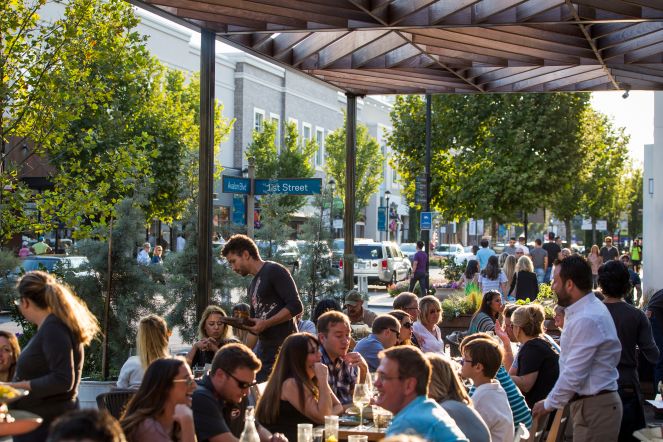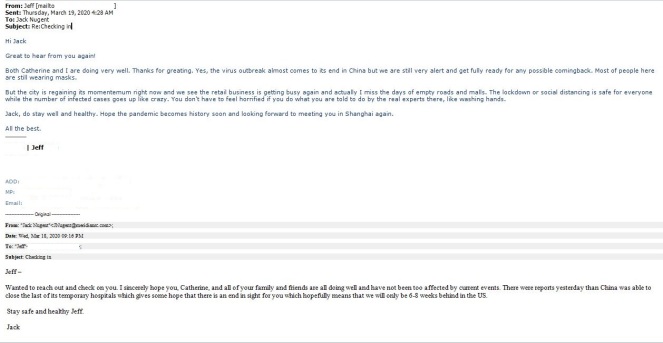Stop – before you grant rent relief! Consider this!
July 3, 2020
With the number of rent relief amendments we have been processing over the last few months, it is clear that many landlords are trying to work with their tenants so that they can make it through these COVID-impacted times. The most well-respected retail landlords have always considered the tenant mix of their properties. The right balance. The right placement. Asset management decisions are made that, to an outsider, may seem counter-intuitive. But, get it right, and the entire property benefits from increased sales which ultimately results in increased rents. So, for their own health, landlords want to help their tenants survive (and get back to thriving). Therefore, landlords are considering and granting rent deferrals and, to a lesser extent, rent abatements and reductions to help tenants recover.
However, there is one issue that could impact cash flow at a property for years to come as a result of the coronavirus shut downs – non-cumulative caps. If you are in accounting or finance, a light may have just gone on. If you are in leasing or management, you might be inclined to stop reading. But, give me a minute.
If you look at a portfolio of properties, it is extremely common for caps on operating expenses to exist in 50% + of the leases. A cap limits the amount a tenant will have to pay as their share from year to year. There truly is an endless number of ways that a cap can be written, but there are two basic varieties – cumulative and non-cumulative.
For a landlord, if you have to give up a cap, cumulative is what you want. Once you know the initial cap, the actual expenses from year to year will have no impact. The cap increases are independent of the expenses. For example, if I have a lease that states my cap for the first year is $5.00/sf, with the cap increasing by 5% per year thereafter, I can tell you what the cap is going to be in the 5th year ($6.08/sf), or the 10th year ($7.76/sf). The cap allows a tenant to know its maximum exposure down the road.
A non-cumulative cap is impacted by expenses annually. A non-cumulative cap will read something to the effect of “CAM shall not increase by more than 5% over the prior year actual expenses.” Do you see the difference? Unlike in a cumulative cap situation where the increase is applied on the cap itself, in the case of non-cumulative, it is applied on the actual expenses. So, if actual expenses are less than the cap, the cap for the subsequent year – impacting each year thereafter. This materially benefits the tenant over a cumulative cap.
So, in our example, let’s consider that the 5th year is 2020. And, then let’s consider that the property was not operating for 3 months. Perhaps if we were operating for the full year, actual expenses would have been $6.00/sf – still less than what would have been a 5% increase per year. But, because we were shut down, actual expenses for the year come in $4.50/sf. For 2020, we are good. We are less than the cap and we recover 100%. However, in subsequent years, when operations get back to normal, the impact becomes evident.
Let’s say that for 2021, we are back at just $6.00/sf of CAM – no increase over what actual CAM would have been for 2020. With a cumulative cap, we are good. Our cap is $6.38/sf. Actual expenses were $6.00/sf. We recover the full amount. However, with a non-cumulative cap, we have to apply the 5% increase over 2020 actual. 5% on $4.50 is $4.725/sf. That means that we, the landlord, have to absorb $1.275/sf for that year. And, likely each year thereafter.
Your initial thought will likely be that it is not fair or right and that the tenant will understand and the landlord and tenant will take the shutdown into consideration. But, there is absolutely no assurance that will happen. As always, we have to live with the terms of the lease.
However, if landlords consider this now, as they are granting rent relief, this issue can be avoided altogether by addressing this issue as part of an amendment or letter agreement. Something to the effect of the following:
Landlord and tenant acknowledge that tenant has a non-cumulative cap on CAM/Operating Expenses. Landlord and tenant also recognize that, as a result of the impact to the Property by coronavirus, 2020 operating expenses will not reflect a typical year of operations. Therefore, landlord and tenant agree that the cap for 2021 will be 2019 actual expenses increase cumulatively for 2020 and 2021. After 2021, the cap will then revert to the lease required non-cumulative cap for the remainder of the term.
As a general rule of thumb, mom and pop tenants are least likely to have negotiated caps in their leases. Regionals and nationals are most likely to have negotiated caps. And, the better the tenant, the more likely they are to have to have their preferred non-cumulative caps.
As a landlord, you are doing what you can to be fair and help your tenants survive. Don’t let the impact of COVID-19 have unintended consequences.



